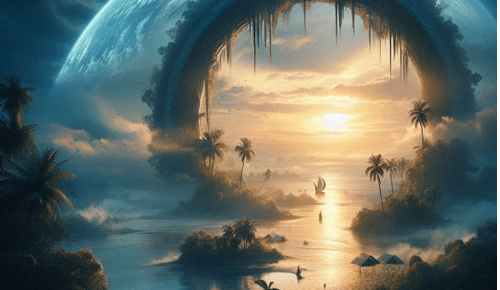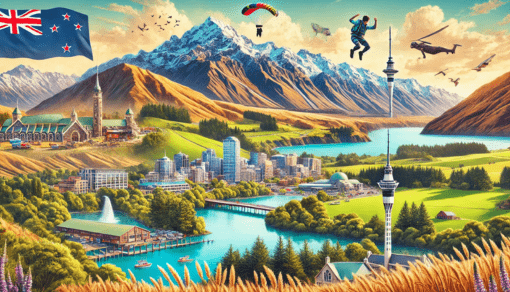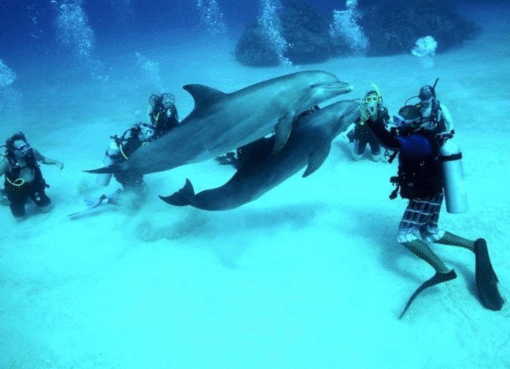Conquering Gokyo Lakes and Everest Base Camp A Sherpa-Led Expedition Adventure

A trek to the Sikkim Himalaya isn’t something that should be done lightly, and an individual trek to Gokyo Lakes and to Everest Base Camp is something that should only be determined under the guidance of an expert. Located in the heart of Nepal’s Khumbu region, two of the most recognizable names in the trekking world. The Gokyo Lakes, the chain of glacial lakes set against a backdrop of towering, snow-capped peaks, are among the most beautiful sights in the Himalayas. The lakes are not only a feast for trekkers’ eyes, but a representation of the spiritual connection that the Sherpas and local peoples have with the land.
It all starts with a flight into Lukla, a small mountain town where the trek begins. Beyond this point, the trail meanders through quaint villages, vibrant woodland, and rugged terrain, all with the commanding figure of Everest growing near. Trekking along the way, visitors embrace the hospitality and wisdom of the Sherpas, whose intimate knowledge of the mountains helps to make the trek not only safer but for many, more enriching. These Sherpas have often spent their lives in the shadows of the world’s highest summits; they are often more than guides, they are the spirit of the expedition, the provider of their culture, their stories, and their deep connection with the Himalayas.
Everest Base Camp The Trek147Because the trail to Everest Base Camp takes trekkers into the beauty of the Khumbu Icefall, the massive glaciers, and the raw power of nature, the Himalayas, and all its views and splendor. The awe-inspiring journey continues in the final leg, as you reach Gokyo Lakes. The turquoise lakes with huge mountains around them are just magical. The Everest Base Camp and Gokyo trek is a balance of adventure and quiet. A journey that connects trekkers with the land of the Sherpas and the spirit of the Himalayas. It’s an opportunity to observe at close range the beauty, struggle, and culture of one of the world’s most storied areas.
An Introduction to the Expedition
Everest Base Camp Trek And a trek to the Gokyo Lakes and Everest Base Camp (EBC) is one such adventure. Nestled at the heart of the Himalayas, this trek is a unique opportunity to experience the highest mountain in the world, Mount Everest, in all its grandeur, while also immersing oneself in the rich tapestry of the lives of the Sherpas. The trip normally takes 12 to 14 days, and the Gokyo Lakes area is a peaceful and not-so-frequented option compared to the more popular EBC trek. Trekkers will cross some rugged terrain and high-altitude passes and contend with different climates while taking in views of towering peaks including Cho Oyu, Lhotse, and Makalu. This expedition is a bucket-list adventure for many outdoors enthusiasts, the combination of natural beauty, physical challenge, and cultural immersion.
Gokyo Lakes and Everest Base Camp Overview
Gokyo Lakes and Everest Base Camp Trek – a two-for-one trek that encompasses the spiritual heart of the Himalayas and the world’s most iconic mountain. The Gokyo Lakes are a series of stunning glacial lakes nestled in the foothills of towering snow-capped peaks and provide a peaceful and less traveled alternative to the crowded Everest Base Camp. From the Gokyo Lakes, there is a trek to Everest Base Camp, the position where several climbers start their How to Get Everest Base Camp Trek. Along the way, trekkers visit Sherpa villages, Buddhist monasteries, and pristine forests, which makes the trek as much about culture as it is a challenge. The trail connects to the classic Everest Base Camp trek at the village of Dingboche, where the iconic views of Everest, Lhotse, and Nuptse come into view. These two treks take trekkers to both high-altitude destinations and provide an all-rounded hiking experience of Everest with breathtaking views but also the challenge of reaching these areas nestled Himalayas, the world’s highest trekking point.
Sherpas and Their Role in the Expedition
Gokyo Everest Base Camp trek package The importance of Sherpas on any trek in the Himalayas, especially in the Everest region. Through their in-depth knowledge of the terrain, weather, and altitude challenges, these skilled and knowledgeable individuals, who may serve as mountain guides, also help ensure the safety of trekkers and provide invaluable logistical support. Sherpas, who are predominantly of Tibetan ancestry, have lived in the Khumbu region for generations, and their experience and skills are essential for climbers and trekkers alike. They help to carry heavy loads, they help navigate tough trails, and they give guidance on acclimatization, helping trekkers adjust to thinning air at higher altitudes. Their job is also about more than the practical; Sherpas also act as cultural ambassadors, offering insights into the customs and traditions of the Sherpa people. Numerous Sherpas also act as personal guides and provide immeasurable assistance during the trek. The term Sherpa has become closely associated with mountaineering and trekking in the Himalayas, but their contributions extend far beyond their physical prowess — they are the heart of Himalayan expeditions.
Getting Ready for the Trek
Proper planning and preparation are essential to successfully completing the Gokyo Lakes and Everest Base Camp trek. First of all, trekkers should be fit and healthy since the trek includes long day walks, often at high altitudes, therefore, making it more difficult to breathe. Cardio training and endurance exercises are key in preparing for the trek. Being mentally prepared before climbing is also essential because the hike can be physically tiring and mentally draining. Moreover, it is crucial to focus on getting permits like Sagarmatha National Park and the TIMS (Trekkers’ Information Management System) cards needed for EVEREST entry. Packing for such a trek is another key step, which should focus on wearing layers to address fluctuating temperatures and having the right gear to carry with you, including a first-aid kit, water purification tablets, and trekking sticks. Lastly, the season in which you take the trek (generally either spring (March to May) or fall (September through November)—can also have a major impact on the experience, as these seasons present the most stable weather and the clearest views of the mountains.
Acclimatization and also a Little Thing Called Health
One of the most important aspects of trekking in high-altitude regions, such as the Gokyo Lakes and Everest Base Camp, is acclimatization. The elevation can be detrimental to the health of individuals not accustomed to it, one of the most common ailments is Acute Mountain Sickness (AMS), which results when the body is unable to acclimatize to the reduced O2 levels at altitude. To mitigate the risk, trekkers must rise slowly, giving the body time to acclimatize to the thinning air. Generally, the trek itinerary contains plenty of res up to acclimatize, where trekkers stay in higher altitudes without gaining major elevation so their bodies can acclimatize. It’s important to drink enough, eat nutritious foods, and sleep during these times. The authors also warn trekkers of the other issues that may be present, including dehydration, gastrointestinal complications, frostbite, and extreme weather conditions. Proper medication, a high-protein diet, and layered clothing can work wonders during these struggles. In preparation for the trek, it is recommended to seek advice from a healthcare professional as per required immunization and altitude sickness prevention.
This week, on Trekking Throughout the Khumbu region
EBC Gokyo Trek cost The trekking route, which passes through the Khumbu region and forms the main part of the Gokyo Lakes & Everest Base Camp trek, is popular for its stunning natural landscape and unique cultural context. As they pass through this part of the country, trekkers will hike across a myriad of environments, including green subtropical forests and barren, rocky terrain near Everest Base Camp. The trek starts at the town of Lukla, where adventure seekers will fly into the heart of the Khumbu. From there, the trail winds through scenic Sherpa villages such as Phakding, Namche Bazaar, and Dingboche, where trekkers can get a taste of Sherpa hospitality and the area’s rich Buddhist culture. As trekkers make their way along the trail, they will come across ancient monasteries, prayer wheels, and chortens (turrets), enveloping them with the spiritual atmosphere of the Himalayas. The Khumbu region also contains many glaciers and icefalls, giving trekkers some of the most spectacular views of the world’s tallest peaks. It’s a common sight to see trekkers struggling for breath as they ascend to ever-increasing heights; the oxygen thins; every single step gets tougher, yet the mesmerizing views and sense of accomplishment make all this effort well worth it. The Khumbu region’s unique combination of rugged natural beauty, cultural richness, and physical challenge have made it one of the world’s most sought-after trekking destinations.
Journey to Gokyo Lakes: The Road Less Traveled
The Gokyo Lakes trek is one of the most spectacular treks of the Himalayas. The trek begins in the town of Lukla, filled with lovely Sherpa villages and stunning views of mountains, guiding trekkers through various terrains and beautiful landscapes. The trail climbs, and trekkers pass through fields of lush forests, alpine meadows, and rugged rocky terrain, giving way to the high-altitude environment that marks the Gokyo region. The trail hugs the Dudh Koshi River, and the sudden shifts in scenery — from dense cedar and pine forests to open mountainous alpine environments — are a visual feast. These are the Gokyo Lakes themselves, a series of turquoise blue water bodies situated in the lap of mighty snow-capped peaks, such as Cho Oyu and Mount Everest, that bring you the most breathtaking sense of serenity and enormity ever. This area is wonderful, as you can appreciate not only the paths but also the stunning landscapes you are surrounded by. Each step, turn, and vista is another experience of the Himalayan ecosystem. Reaching Gokyo Lakes is a significant achievement for most trekkers while also a true essence of nature, which is why this trek ranks amongst the best in the Everest region.
Everest Base Camp, the Challenge
Everest Gokyo Trekking route It is a 10-day trail voyage to base camp and one of the most challenging and satisfying experiences that tests not only physical endurance but mental resilience. The trek itself begins in Lukla and gradually takes trekkers through a number of Sherpa villages (Namche Bazaar, Tengboche, Dingboche, etc.). The high-altitude adventure demands a good amount of stamina, acclimatization, and drive to push yourself as the ascent has to happen daily. Not only is the challenge of putting your body to the limit but it also the constant changing of weather conditions, rarefied air, rugged trails, etc. On the way up, trekkers are confronted with punishing ascents, altitude sickness, and the mind games of trekking in one of the most extreme environments on the planet. The last stretch of the trek to Everest Base Camp is arduous too, as trekkers cross boulder-strewn moraines and glaciers, Everest itself rising larger and larger with every step. But getting to Base Camp, standing in the shadow of the world’s tallest mountain is a tremendous sense of accomplishment. To the Everest Base Camp trekker, however, summiting means something entirely different; to the Everest Base Camp trekker, it’s finally making that last step at the world’s most challenging, difficult, least accessible (yet stunning) place, and every single step closer to that Base Camp is victory enough. Read More: What is Gimkit GimFish?
Go Trekking Through the Himalayas: Landscapes and Wildlife
The Himalayas, also known as the “roof of the world,” are home to some of the world’s most diverse and breathtaking scenery and wildlife. With mountainous terrain spanning five countries, the region includes snow-covered summits, steep valleys, dense forests, alpine meadows, and glacial lakes. Trekkers are rewarded with sweeping views of iconic peaks such as Everest, Lhotse, and Makalu, as well as some of the world’s most dramatic geological formations. The vistas are ever-changing —from terraced green fields to pine forests to desolate, rugged land above the tree line. As hikers make their way up, the air gets thinner, but the views are even more spectacular, with glaciers and icefalls found in the high-altitude area. In addition to its geological wonders, the Himalayas are also home to a rich diversity of wildlife. When trekking, you may encounter animals such as the elusive snow leopard and Himalayan tahr, red panda, and different birds, including the Himalayan griffon vultures and colorful pheasant. As the jewel of diverse landscapes, so is the unique flora and fauna among them, ranging from medicinal herbs to alpine flowers and ancient trees. The landscape, wildlife, and snowcapped mountains of the Himalayas are ever-present and a constant reminder of the marvels of nature.
Cultural Experiences: Meet the Sherpas
Everest Base Camp via Gokyo Lakes One of the most rewarding features of the Everest region trek is connecting with the Sherpa people. The Sherpas are known for their extraordinary climbing and endurance in high altitudes, and their culture is rooted in the mountains they inhabit. The important early stop on the route — Namche Bazaar — captures the attention with its vibrance, sitting in the backdrop of an unbeatable array of mountains, while the hospitality of the local people shines through as trekkers walk through Sherpa villages like Khumjung. The Sherpas’ deep reverence for their spirituality, heavily influenced by Tibetan Buddhism, is apparent in the many monasteries, prayer flags, and stupas that fill the landscape. Visitors are often invited to participate in traditional customs—like tea ceremonies—and welcomed with open arms into local homes to learn about Sherpa life and customs as well as the deep connection between the community and the mountains. The Sherpas have a profound relationship with their environment, and their existence is intrinsically connected to nature’s rhythms and the challenges of life at high altitudes. Their tales unfold over butter tea or local food, offering a rare glimpse into life in one of the most remote and breathtaking regions of the world. A trek through the Everest region is equally a cultural exploration and a physical achievement, and the Sherpas’ deep impact on the trek makes the experience that much more powerful.
Isolating Prevention + Mitigation + Cure: Safety Considerations
There are several such treks in the Himalayas including Everest Base Camp Trek, Gokyo Lakes Trek, and others along the intimidating routes. However, the high-altitude environment brings with it several potential dangers, from altitude sickness to extreme weather conditions, so being well-prepared is essential. Because of altitude sickness, trekkers need to gradually build up an acclimatization to high altitudes. This means a staggered schedule of slow and steady ascent, with rest days in critical places, like Namche Bazaar and Dingboche. The most experienced Sherpa guides help manage these risks by making sure trekkers understand the symptoms and when to descend if acute altitude sickness strikes. Himalayan rain, snow, and frost phenomena can occur up to 15,000ft and onwards, so it is important to have the right warmer layers, and to always stay prepared! To do so, wear appropriate clothing and layered, stay hydrated, and pack enough for the journey. Furthermore, trekking with a well-established guide or company makes sure there will be emergency evacuation plans if an accident or health problems occur. The routes are often remote, with limited access to medical facilities, so bringing a first-aid kit and basic first-aid practices and keeping communication open with the outside world are important safety measures. Overall, safety is paramount, and with good planning, proper gear, and professional guidance, trekkers can safely and successfully traverse the majestic Himalayas.
On the Summits of Life: Reflection and The Power of Experience
EBC Cho La Pass Trek The summit of a high-altitude trek — such as Everest Base Camp or Gokyo Lakes — is only one destination on a very personal journey that changes those who dare to embark on it. Trekking in dry and rocky terrain, high altitude, physical exhaustion, and mental fatigue stretch trekkers beyond their working limits. When trekkers finally find themselves at Everest Base Camp or peering down at the breathtaking Gokyo Lakes, they’re not simply celebrating the end of a journey — they’re retracing a life-changing experience. The effort to attain these legendary places breeds fulfillment, self-understanding, and strength deep within. It’s a chance to go outside of what is comfortable, to discover one’s own boundaries, to realize strength while facing adversity. Besides the key physical challenge, these treks also provide periods of quiet reflection, where adventurers therefore a chance to contemplate about the nature, cultural exchange, and self-improvement experienced on the journey. It is the landscapes, the bond with the Sherpa community, and the satisfaction of achievement that leaves a long-lasting impact and fuels the desire to go back or undertake new adventures. Fellow trekkers and I have talked about when we stand at the top—be it Everest Base Camp or Gokyo Lakes—it’s not just about the destination; it’s about the journey, having generous memories, learning, and different visions of life. It’s an experience that lingers long after you’ve finished the trek.
Leave a Reply
You must be logged in to post a comment.




Leave a Comment